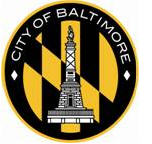City of Baltimore Provides Update on Building Water Quality Concerns, Recommends City Courthouses Close to Address Presence of Legionella Bacteria
Friday Dec 20th, 2024

FOR IMMEDIATE RELEASE
BALTIMORE, MD (Friday, December 20, 2024) — Today, the City of Baltimore announced the following update on ongoing building water quality concerns in Baltimore City facilities.
Precautionary testing in three Baltimore City courthouses indicated elevated levels of legionella bacteria in the Baltimore City District (People's) Courthouse at 501 E. Fayette Street, Clarence M. Mitchell, Jr. Courthouse at 100 N. Calvert Street, and Elijah E. Cummings Courthouse, at 111 N Calvert Street. This proactive testing was ordered on December 2, 2024. Testing in the People’s Courthouse and Mitchell Courthouse was conducted on December 9, 2024, and results were received in the afternoon of Thursday, December 19, 2024. Testing for the Cummings Courthouse was conducted on December 12, 2024 and results were received today, December 20, 2024.
Due to the elevated levels of bacteria found, the City is recommending the immediate closure of the impacted facilities in order to conduct cleaning, system maintenance, and other mitigation efforts to address the presence of legionella bacteria in the buildings. The recommended closure is not related to a public health or safety concern. While the Maryland Department of Health does not require closure, the City is making this recommendation out of an abundance of caution. District Judge leadership and the Court Administrator responsible for operating the impacted courthouses will make the ultimate decision regarding closure.
The Cummings MECU building was also tested on December 12, 2024 and results were received on December 20, 2024. Extremely low levels of legionella were discovered and it was determined that the building does not require a closure recommendation.
This proactive testing was conducted after concerns were raised in other state and federal government facilities in downtown Baltimore. Since the presence of legionella was detected in the state government facilities at State Center, those buildings have received appropriate mitigation measures and since reopened.
Ongoing Testing
Due to the ongoing concerns, the City of Baltimore has elected to do precautionary testing at other major downtown city government facilities. Abel Wolman building at 200 Holliday Street was tested on December 12, 2024 and results are expected on or before December 29, 2024. Tests were initiated at the Benton Building at 401 E. Fayette Street and City Hall at 100 Holliday Street on December 18, 2024, with results of these tests expected by January 5, 2024.
Minimal Impact on Broader Water Distribution System
The City’s public distribution system, like most municipal systems, is designed to keep water in constant motion and includes chemicals – namely chlorine – specifically designed to prevent bacteria growth, making the typical conditions for the presence of legionella bacteria unlikely. While there is no requirement for a public water system to test for legionella, out of an abundance of caution, DPW has been conducting tests on the level of chlorine in the system in the impacted areas for the past several weeks in an effort to entirely rule out concern about the City’s system. The chlorine levels signify whether legionella can grow. So far, the chlorine residual levels in the surrounding areas have been tested and are sufficient.
Current Status of Health Concerns
The Baltimore City Health Department (BCHD) has not received any reports of confirmed cases of Legionnaires’ disease. Currently, one individual has experienced symptoms and has sought testing for potential impact associated with legionella bacteria. BCHD will continue to monitor for relevant reports and work in coordination with the Maryland Department of Health to address any concerns as they arise.
Additional Background on Legionella Bacteria & Related Health Concerns
Legionella is a bacterium that can be found in many natural and man-made water systems. The most common way for someone to get sick is by breathing in small droplets of water contaminated with legionella that is sprayed in the air (i.e. water mist or vapor). Most healthy people exposed to legionella do not get sick.
Individuals who do get sick experience symptoms including cough, fever, headache, muscle aches, and shortness of breath. If you are experiencing symptoms of pneumonia (cough, fever, shortness of breath, chest pain), contact your health care provider. There are many forms of pneumonia, and respiratory infections with symptoms that overlap with pneumonia. Your health care provider can help determine the cause of your symptoms. Urine tests or sputum tests are the best tests to diagnose Legionnaires’ disease. Note that blood tests are usually not as helpful in diagnosing Legionnaires’ disease.